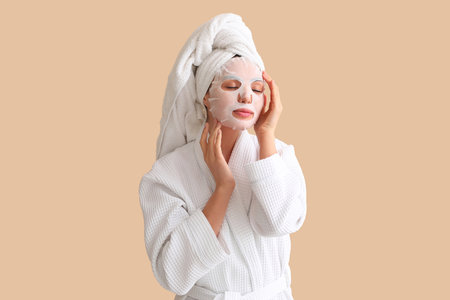Understanding Your Skin Type the British Way
If you’re on a quest for glowing, fresh-faced skin in the UK, choosing the right exfoliating scrub begins with understanding your own unique skin type. Here in Britain, our weather – think crisp winds, drizzly afternoons, and that rare burst of sunshine – means our skin faces its own special set of challenges. From the blustery Scottish Highlands to the mild southern coasts, knowing your skin type is essential before you even glance at an exfoliator. British dermatologists say it’s all about working with your skin, not against it. Why? Because using the wrong scrub can leave you feeling less radiant and more raw.
| Skin Type | Typical Traits | Common in UK? |
|---|---|---|
| Normal | Balanced, rarely oily or dry | Yes, especially in temperate climates |
| Dry | Flaky patches, tightness, dullness | Quite common during winter months |
| Oily | Shiny T-zone, visible pores | More frequent among younger people or during humid spells |
| Sensitive | Easily irritated, redness, stinging sensations | Often triggered by pollution or weather changes |
| Combination | Mix of oily (usually T-zone) and dry areas (cheeks) | The most common across all age groups |
No matter if your skin leans toward the classic British combination or tends to dryness after a brisk walk along Brighton Pier, knowing where you stand is the natural first step. This awareness will help you select an exfoliating scrub that’s gentle, effective, and perfectly suited to your everyday routine – whatever the forecast has in store.
2. The Science of Exfoliation: What British Experts Say
Exfoliation is more than just a beauty ritual—its a key step in maintaining radiant, healthy skin. According to leading British dermatologists, exfoliating helps remove dead skin cells from the surface, revealing a fresher complexion underneath and supporting natural cell turnover. This process not only encourages smoother skin but also enhances the absorption of serums and moisturisers, making your daily skincare routine more effective.
How Exfoliation Works
There are two main types of exfoliants: physical scrubs and chemical exfoliators. Physical scrubs use gentle granules or beads to manually buff away dead skin cells, while chemical exfoliators (such as AHAs and BHAs) dissolve the bonds between cells for a smoother finish. Understanding which type suits your skin is essential for avoiding irritation and achieving the best results.
Benefits for Different Skin Types
| Skin Type | Recommended Exfoliant | Main Benefits |
|---|---|---|
| Sensitive | Mild chemical exfoliant (e.g., lactic acid) | Smooths texture with minimal irritation |
| Oily/Combination | BHA (salicylic acid) or fine physical scrub | Unclogs pores and reduces excess oil |
| Dry | Gentle physical scrub or mild AHA (glycolic acid) | Removes flaky patches, boosts hydration absorption |
| Normal | Balanced physical or chemical exfoliant | Keeps complexion bright and smooth |
How Often Should You Exfoliate in the UK?
British experts recommend tailoring your exfoliation routine to both your skin type and the UK’s climate. The often cool, damp weather can make skin feel congested but also sensitive, so moderation is key. Here’s a quick guide:
| Skin Type | Recommended Frequency (per week) |
|---|---|
| Sensitive/Dry | 1 time |
| Normal/Combination | 2 times |
| Oily/Resilient | 2-3 times |
A Little British Wisdom: Less Is More!
Top UK dermatologists agree: over-exfoliating can lead to redness, dryness, and even breakouts. Always listen to your skin’s needs, use gentle products suitable for your climate, and follow with a nourishing moisturiser. Remember—a glowing complexion is all about balance and care!

Natural Ingredients: Top Picks from British Skincare Pros
When it comes to choosing an exfoliating scrub, British skincare experts are leaning into nature’s larder, championing gentle, locally-sourced ingredients that do wonders for your skin without harming the planet. Gone are the days of harsh microbeads—instead, the UK beauty scene is all about eco-friendly exfoliants that suit every skin type while supporting sustainable practices.
Why Choose Natural and Local?
Opting for natural, home-grown ingredients means you’re treating your skin to pure goodness with minimal risk of irritation or allergic reactions. British-made scrubs often avoid synthetic fragrances and unnecessary chemicals, focusing on what truly works for healthy, glowing skin. What’s more, supporting local suppliers reduces your carbon footprint—a win-win for both your complexion and the environment.
Favourite Eco-Friendly Exfoliants in the UK
| Ingredient | Skin Type Suitability | Why Experts Love It |
|---|---|---|
| Oatmeal | Sensitive, Dry | Mildly buffs away dead cells while soothing redness—ideal for delicate complexions. |
| British Sugar | Normal, Combination | Dissolves gently as you scrub; great for a soft polish without over-exfoliating. |
| Ground Walnut Shells | Oily, Normal (not recommended for sensitive) | Naturally abrasive for a deeper clean—use with care if your skin is prone to irritation. |
| Sea Salt from Cornish Coasts | Body Scrubs, Oily Skin | Packed with minerals and naturally antibacterial properties—fabulous for body exfoliation and keeping blemishes at bay. |
Expert Tip:
If you’re new to exfoliating or have sensitive skin, start with oatmeal or sugar-based scrubs. Always patch-test a new product before using it across your face. By choosing these gentle, eco-conscious options, you’ll not only reveal brighter skin but also support local British producers and protect our lovely countryside.
4. Choosing the Right Exfoliating Texture for Your Skin
When it comes to selecting an exfoliating scrub, British skin often faces a unique blend of sensitivities, thanks to our famously unpredictable weather and busy city life. Understanding the different textures available—and which ones are best suited to your lifestyle—can make all the difference in your skincare routine.
Scrubs, Powders, and Gels: What’s the Difference?
| Texture | Main Features | Best For | British Expert Tip |
|---|---|---|---|
| Physical Scrubs | Contain small grains or beads that manually buff away dead skin cells. | Normal to oily skin; those needing a deep cleanse after a day in London smog. | Opt for scrubs with natural ingredients like oats or sugar for a gentler touch on delicate British complexions. |
| Powder Exfoliants | Finely milled powders (often rice or oatmeal) that activate with water to create a bespoke paste. | Sensitive skin, dry or mature skin; ideal for those living in chilly, dry UK climates. | Mix with warm water or a hydrating cleanser for an ultra-mild treatment that won’t strip away essential moisture. |
| Gel-Based Exfoliators | Lightweight gels typically infused with fruit enzymes or mild acids to dissolve dead skin gently. | Combination skin; urban dwellers exposed to pollution and stress. | Look for gels featuring British botanicals like chamomile or elderflower to soothe irritation while you exfoliate. |
The Urban vs Countryside Dilemma
If you’re braving city air, pollution can clog pores and dull your glow—making a gentle but effective scrub or gel-based exfoliant a wise choice. Meanwhile, those enjoying the crisp air of the Lake District may find powder exfoliants kinder during colder months when skin is more prone to dryness.
Expert Advice: Less Is More
No matter where you reside in Britain, remember that over-exfoliating can upset your skin’s natural barrier. Experts recommend starting with once a week and adjusting based on how your skin feels—after all, healthy skin should feel smooth and refreshed, never tight or irritated.
5. Common Mistakes Brits Make (and How to Avoid Them)
It’s all too easy to get carried away in the pursuit of glowing skin, but British beauty experts warn that over-exfoliation is a common pitfall. Whether you’re using a classic face scrub or a trendy new formula, knowing what to look out for—and how to keep your routine balanced—is key for a radiant, healthy complexion.
Spotting Over-Exfoliation: The Tell-Tale Signs
| Sign | Description | What UK Beauty Therapists Say |
|---|---|---|
| Redness & Irritation | Your skin looks flushed or feels sore after scrubbing. | “Give your skin a rest—less is more,” advises London-based therapist Amelia Clarke. |
| Persistent Dryness | Patches of flaky or tight skin, especially around cheeks and nose. | Swap harsh scrubs for gentler options; always moisturise afterwards. |
| Increased Sensitivity | Skin stings when applying products or exposed to cold wind. | “Step back and use fragrance-free, soothing products,” says Manchester’s Olivia Wright. |
| Breakouts | Pimples or bumps appear more frequently post-exfoliation. | This can be your skin’s SOS—dial down frequency and switch to milder exfoliants. |
How to Stay Safe and Glowing: Pro Tips from UK Experts
- Frequency Matters: Most British therapists recommend exfoliating 1-2 times per week for normal and dry skin; up to 3 times for oily skin—but always listen to your own skin’s needs.
- Choose Wisely: Select scrubs with naturally derived particles (think oatmeal or sugar) instead of rough microbeads, which are not only harsh on your face but also the environment.
- Pamper Post-Scrub: Always follow up with a soothing serum or hydrating cream. A splash of cool water helps close pores and calm the complexion—especially handy after facing brisk British winds!
- No Double-Dipping: Avoid pairing physical scrubs with chemical exfoliants (like AHAs/BHAs) in one routine unless advised by a professional.
- Treat Your Skin Gently: Use light pressure and circular motions. “Think of it as polishing fine china, not scrubbing pots,” quips Surrey-based facialist Fiona Marks.
Banish Common Exfoliation Blunders—The Natural Way
If you’ve spotted any warning signs, take a break from exfoliating for at least a week. Switch to calming products like aloe vera gel or gentle British brands known for natural ingredients. Remember: the best glow is one that comes from respecting your skin’s unique rhythm—and enjoying each step of your skincare ritual with a fresh, toxin-free approach!
6. How to Test and Introduce a New Exfoliator into Your Routine
Adding a new exfoliating scrub to your skincare ritual should be as thoughtful as choosing your favourite brew. Here’s a step-by-step guide, tailored for UK readers, to ensure your skin enjoys every benefit—without unnecessary fuss or flare-ups.
Step 1: Patch Testing – Your First Line of Defence
Before slathering on that promising British exfoliator, conduct a patch test to check for sensitivity:
| Step | What to Do |
|---|---|
| Choose a Spot | Apply a pea-sized amount behind your ear or on the inside of your wrist. |
| Wait | Leave it on for 24 hours; avoid washing the area. |
| Check Results | If you notice redness, itching or irritation, it’s best to steer clear. |
Step 2: Gradual Introduction – Less is More
Even if the patch test goes swimmingly, don’t dive in headfirst. Ease your skin in gently:
- Start Slowly: Use your new exfoliator once a week at first.
- Monitor Closely: Observe how your skin reacts over the next couple of days.
- Increase Cautiously: If all’s well, increase to twice weekly. Most British dermatologists advise not exceeding 2-3 times per week for face scrubs.
Step 3: Pairing with Other British Skincare Products
The beauty of UK skincare is its focus on gentle, effective botanicals and clinically proven ingredients. Here’s how to combine products for glowing results:
| After Exfoliating | Recommended Product Type | Bestselling British Brand Examples |
|---|---|---|
| Tone | Alcohol-free toner with soothing ingredients like rosewater or witch hazel | Pai Skincare Rosehip BioRegenerate Oil Toner |
| Treat | Nourishing serum with hyaluronic acid or vitamin C | The Ordinary Hyaluronic Acid 2% + B5 |
| Moisturise | Cream with ceramides or natural oils | ELEMIS Pro-Collagen Marine Cream |
| Sunscreen (AM routine) | Broad-spectrum SPF 30+ | No7 Protect & Perfect Intense ADVANCED Day Cream SPF 30 |
Troubleshooting Tips from British Experts:
- If you experience dryness or sensitivity, scale back usage and switch to a gentler formula (look for oats or chamomile).
- Avoid using multiple strong actives (like retinol or AHAs) on the same day as your scrub—your skin deserves a little downtime!
- If in doubt, consult a local pharmacist or NHS dermatologist—many offer free advice.
Your Best Skin Awaits!
The key to healthy, happy skin is patience and consistency. By introducing your new exfoliator slowly and pairing it thoughtfully with other trusted British products, you’re setting yourself up for radiant results—naturally and effortlessly.


